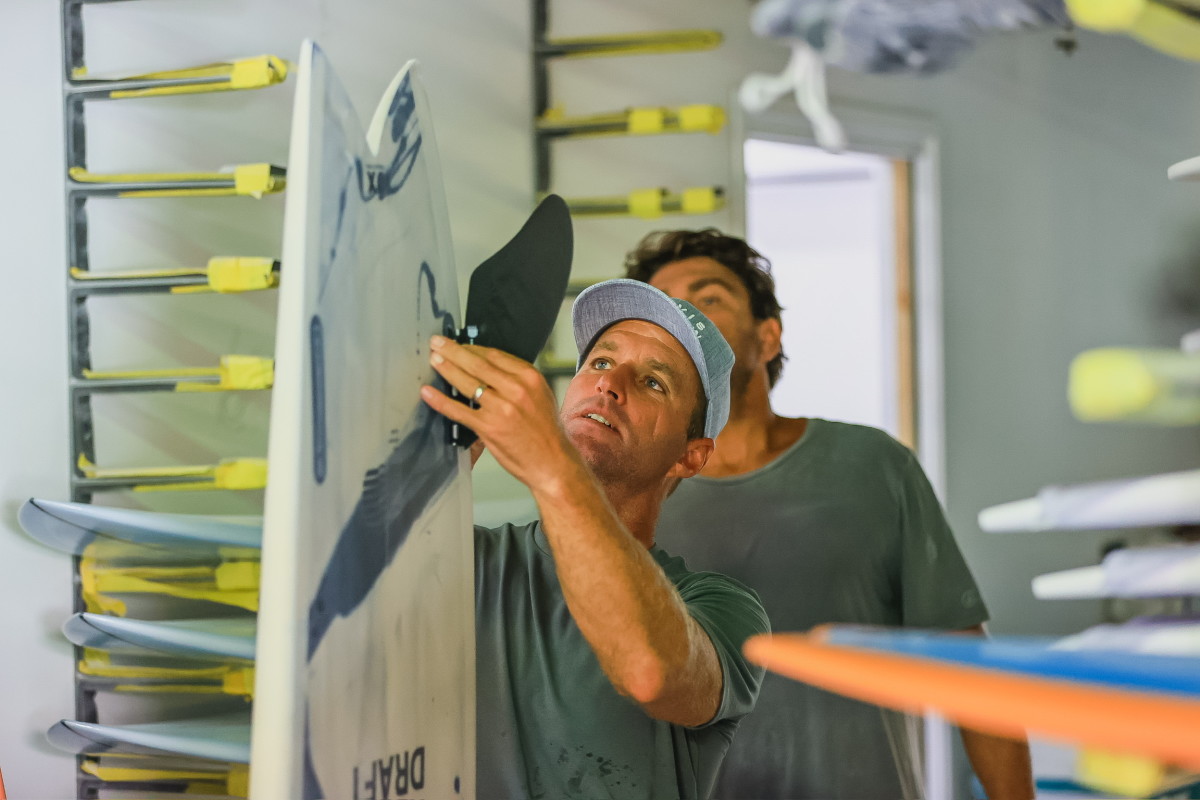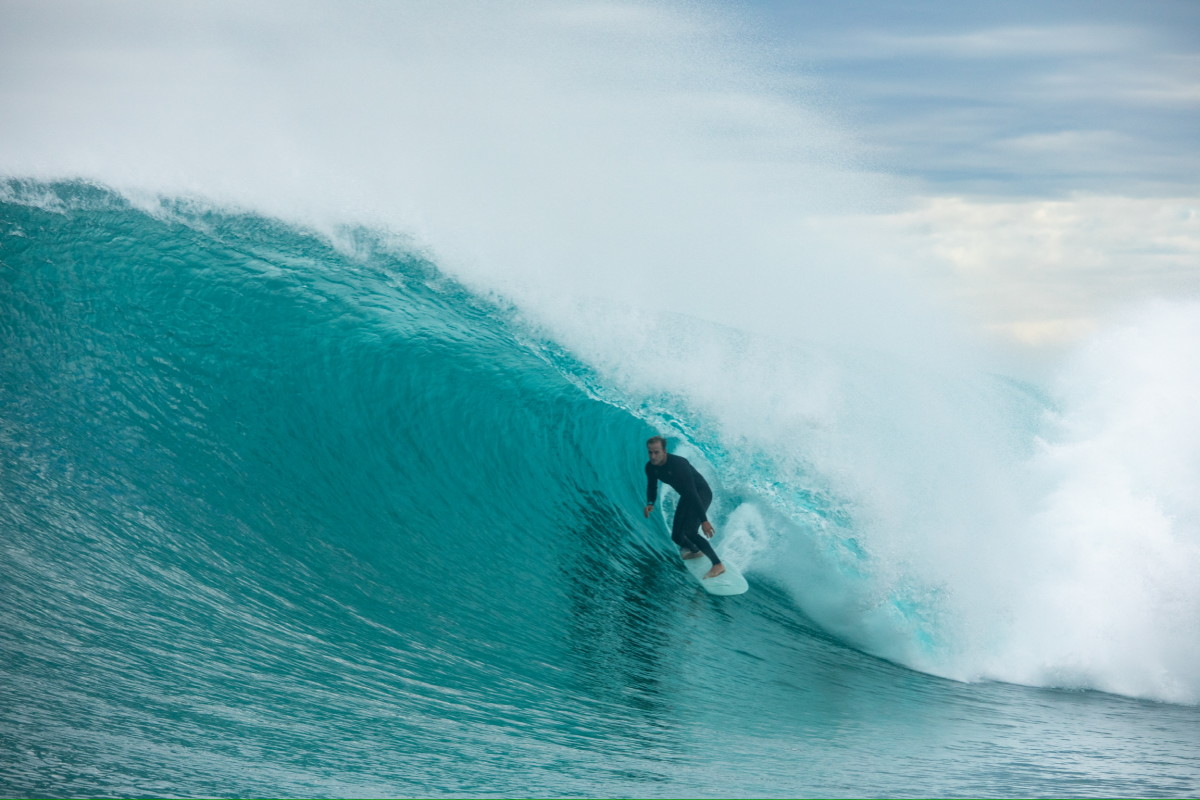Over the past few years, twin fins have seen a massive rise in popularity in surf zones across the world.
The twinnie never really went away; it’s just now there’s a board for every type of wave, and shapers are pushing more progression through the classic shape. What that means is these humble little rockets can slot into your quiver—or maybe even open up your surfing in a way you didn’t think possible.
Anyway, who better to tap up for a few tips about riding a twin fin than purveyor of fun, Mr. Josh Kerr? Since stepping away from the tour, Kerrzy’s been hooked on all the different elements that go into making that twinnie move. Here’s his take on it.
Why a Twin Fin?
“Guess there’s a few different audiences and reasons for wanting to surf a twin fin. There’s those who want to find a new life in their surfing after feeling kind of stagnant with your go to board. And then there’s probably those who like the look and the vibe, the ease of surfing a twin can offer. Maybe they’re stepping away from a thruster, and enjoy a bit more volume in a twin, get the speed going and suddenly, it’s like, ‘woah,’ this is different.
“I guess you can feel like there’s something there again when surfing a twin. For me, I’ve always explored with surfboards, always trying to push the envelope and twins open that up.
“And sure, they were decent as a kid, or whatever, but they’re so much better now. There’s people you see who get stuck on those performance boards, the dream is to be the next Kelly Slater—who might be in their mid-30s or 40s now and are missing real opportunities to surf their best. Think the thought of moving away from being ‘comfortable’ and going with you know, scares some surfers.
“Maybe someone who has that fear about change and twinnies are looking at old school shapes. But there’s much better fin placement now, there’s new rockers, tech, can get so much more out of it these days.
“You can pair fins and rely on the rail more, and then you can surf with the fin tip. You rely on it as an anchor point. Think the key thing is, you can surf so much more of the wave face on a twin. My open face surfing has come on leaps and bounds since exclusively surfing them.”

Related: Mikey February Explains His New Channel Island Twin Fin
OK, but What’s Different?
“The biggest adaption is to be made in the shittiest type of waves. Suddenly, you’ve got all this speed and drive. If you got a good twin under your feet, the benefits on a good wave face are through the roof. How much speed it carries, and it only gets better as wave quality goes up.
“When the waves are bad, you have to read the wave better. You still have that up and down motion, but you’ll carry more speed through the flat sections. Don’t try and yank it around; let the board do the work.
“For me, with a thruster, you keep looking up to the lip and the board wants to take you up steeper and steeper. When you lose that and flatten out the rocker, you can get your eyes onto the open face, you’re not going to lose speed, you can point your eyes and drive on a different spot on the wave. There’s a whole other feeling going up the wave face. And you can feel like you can hang on the bottom of the wave, without getting pulled back.”
Maintaining Speed Is Crucial
“You have so much initial speed, get up and go get honed in. Think it’s only natural that you pop to your feet and explode into your first pump or two, then just let the twin take the wheel. I love that feeling of dropping down, deciding where you want to go, throw up into the pocket, or out to the open face, all with speed. The options are so good. You can’t just stand flat-footed, you got to get the momentum going forward, arms and eyes—the initial pump. But it doesn’t matter what board you’re riding; it’s all the same.”
Maintaining Speed Is Crucial
“You have so much initial speed, get up and go get honed in. Think it’s only natural that you pop to your feet and explode into your first pump or two, then just let the twin take the wheel. I love that feeling of dropping down, deciding where you want to go, throw up into the pocket, or out to the open face, all with speed. The options are so good. You can’t just stand flat-footed, you got to get the momentum going forward, arms and eyes—the initial pump. But it doesn’t matter what board you’re riding; it’s all the same.”
Best Conditions for a Twin
“There’s a twin for all conditions. There’s nothing worse than being under-volumed on a twin. Foam is your friend. Too light and under-volumed, you’ll be pivoting around in the pocket, but with more foam, you get to flow over a few sections. Flat rocker equals speed instantly. You can also play around with the fin-types for some real loosey-goosey action. Go shorter, nice packed out foam, it’s not rockered out, and is more something to glide. Just think when a wave gets really good, they do go faster than a thruster if you find the right one, lean into it, don’t fight it, that’s when the magic happens.”
Trailer Fins: Yes or No?
“It’s a training wheel, really. I’ve never had someone come back to me and say, ‘yeah that was great, but I really want a two plus one or a quad.’ I just think, go all in on the twin from the start and trust the board. If you got that type of surfboard knowledge the tech is there, the fins have so much drive and hold the template and outlines these days are incredible. Trust your shaper. Also, go get on one and get out of your comfort zone. Time to let the three to beach go, buddy.”

Josh’s Go-To Quiver
Trust Me: All rounder.
Whatever: Go to as soon as the waves go overhead.
Mid-length: Menace, ride a 6’0″ version. “I’m 41 now, and when I can’t be motivated to go out and do lots of stuff, I just get on this,” said Josh.

